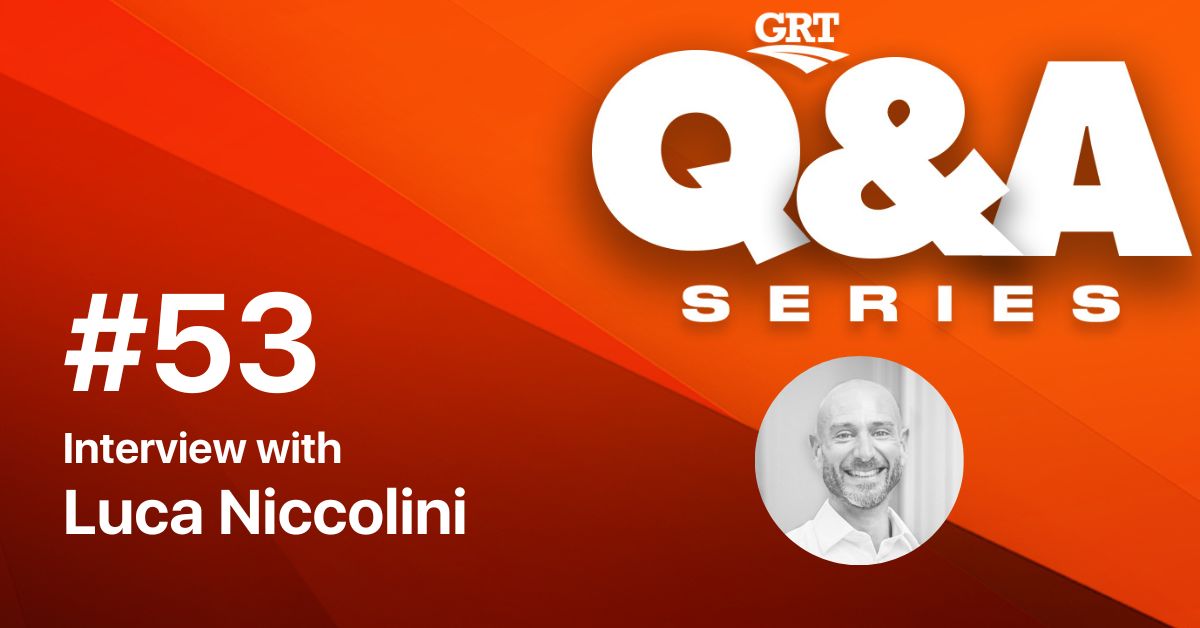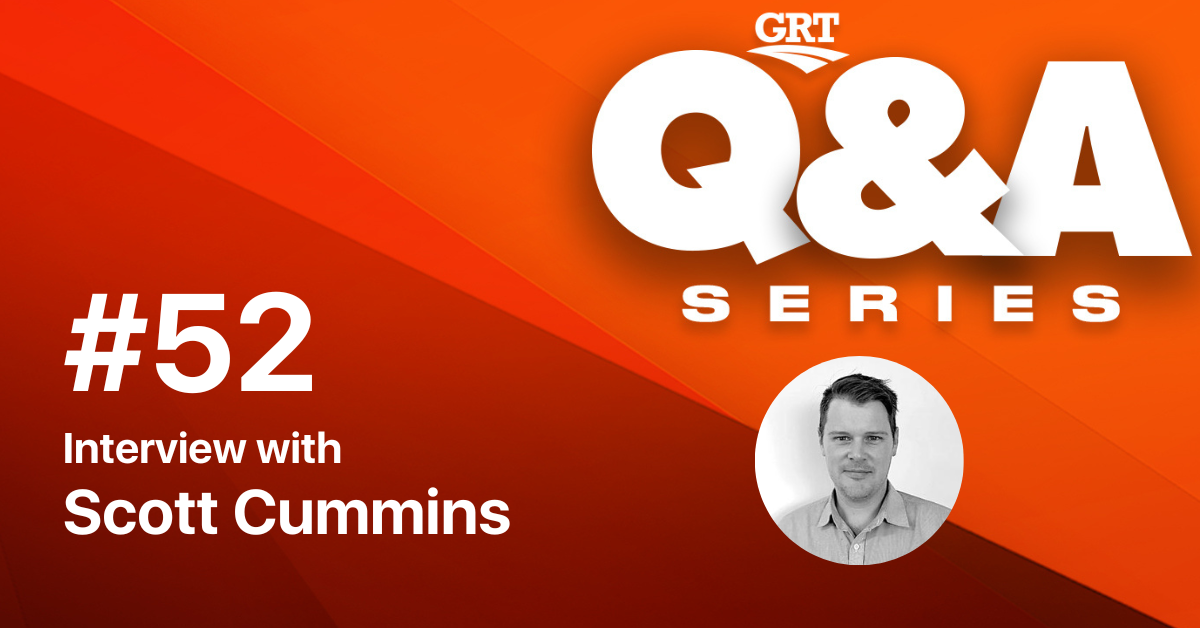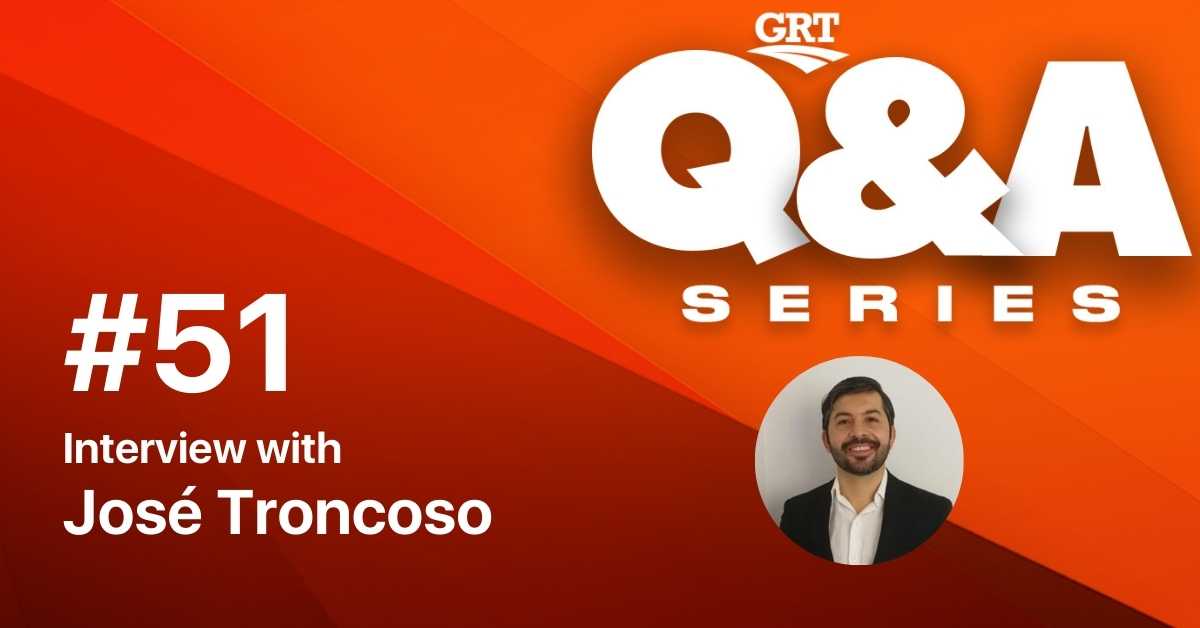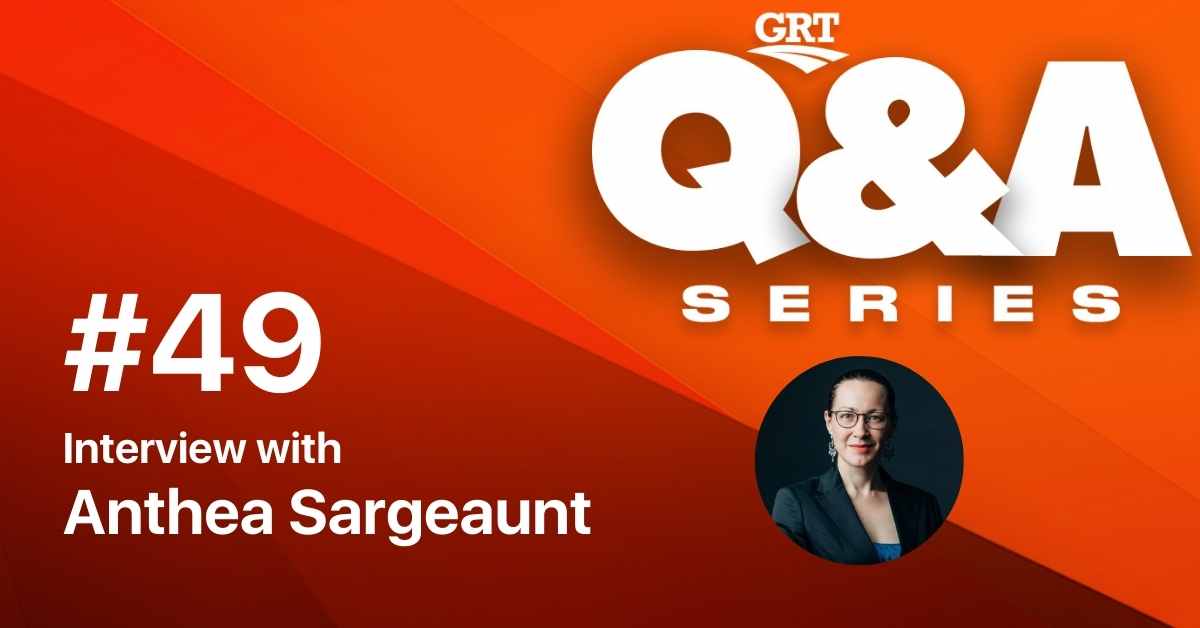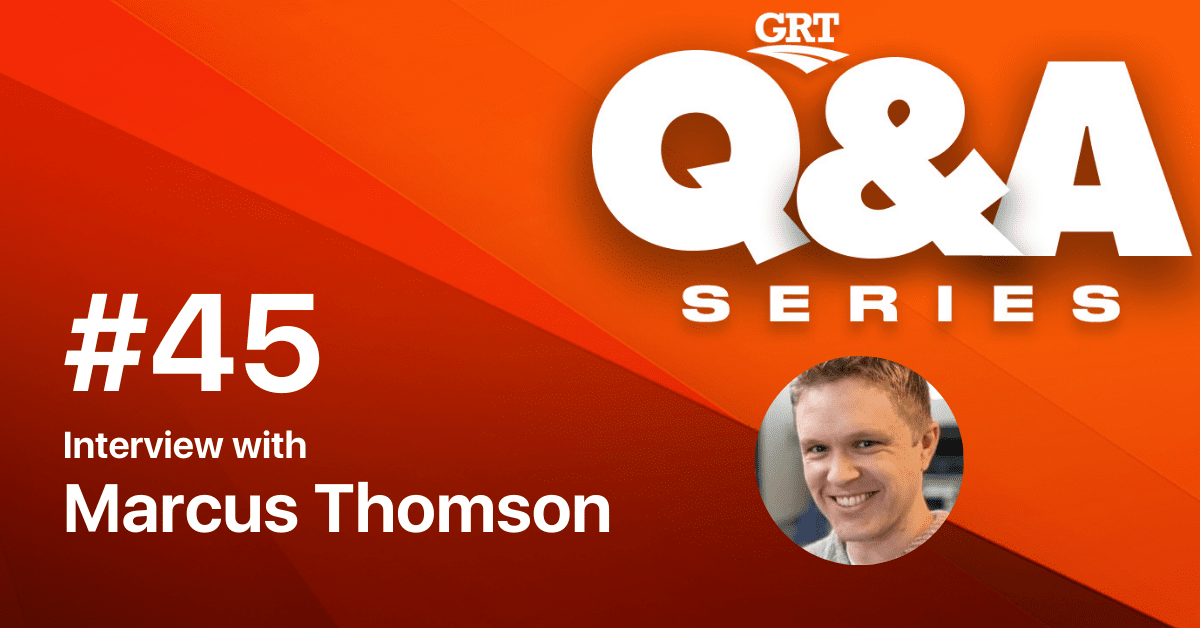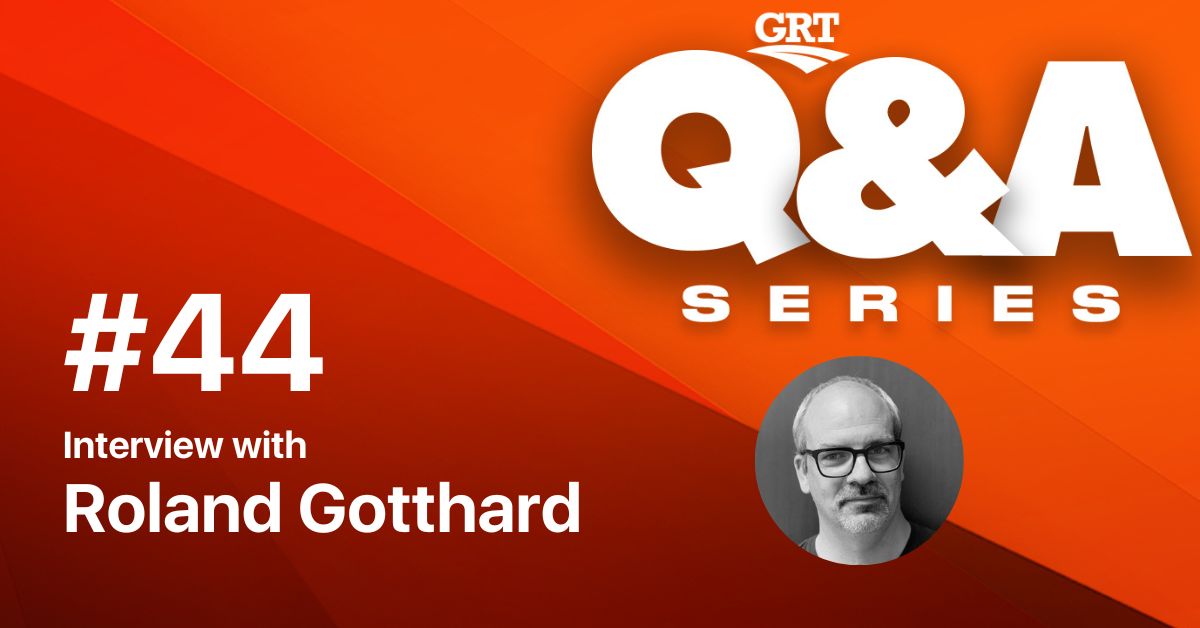Q&A Series #13: Interview with Daniel Grundy
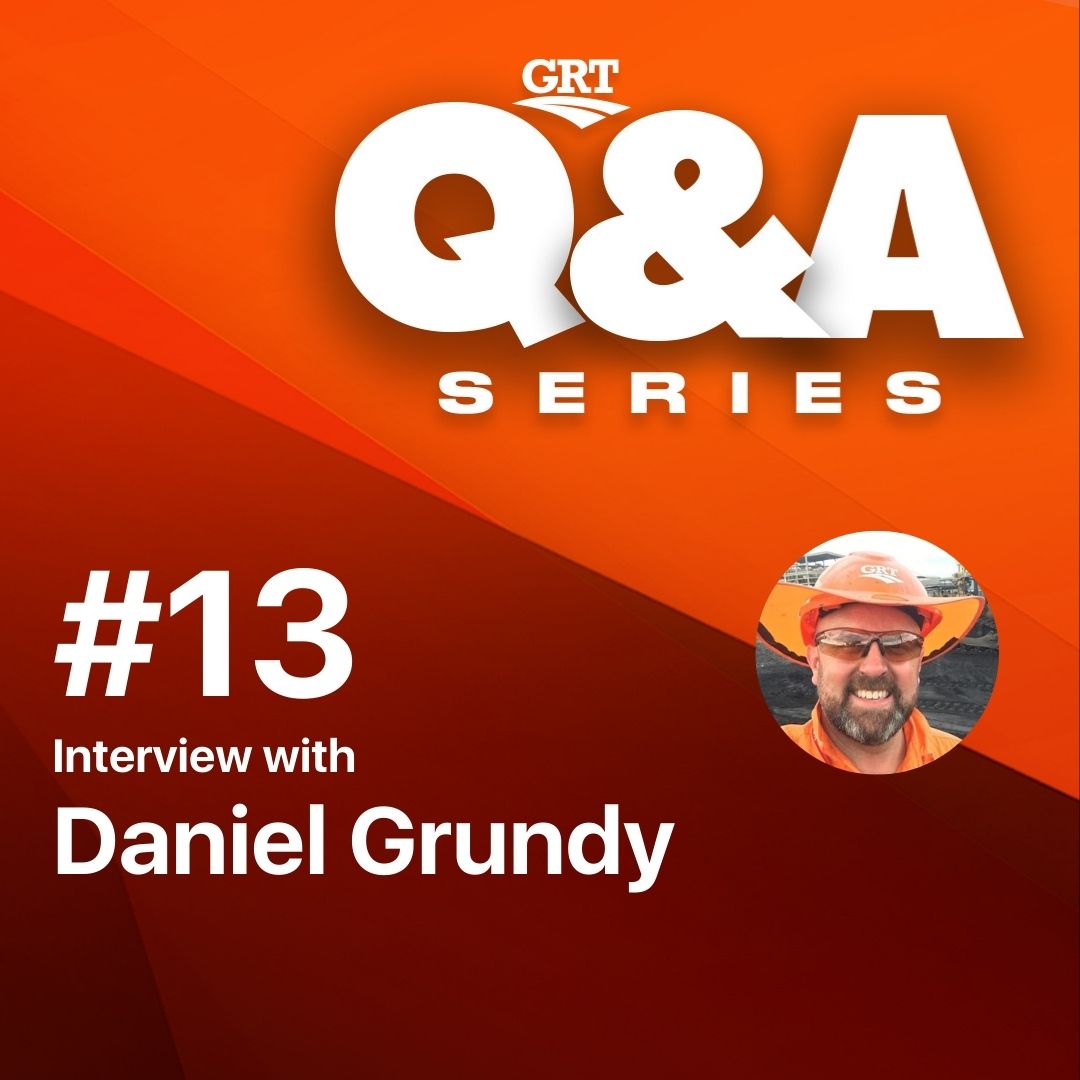
About the guest
Daniel Grundy is the General Manager of GRT with a background in Civil and Environmental Engineering.
His key skills and attributes include: Management, Construction Project Management, Design and Constructability Advice, Estimating and Tendering, Program Management, Leadership, CPEng & RPEQ. Experienced in: organisational management, roads, bridges, pavement stabilisation, noise barriers, retaining walls, reinforced soil structures, structures, major drainage, major earthworks, service relocation, soil nailing, rock bolting, erosion and dust control, polymer technologies, restoration and revegetation works.
The topic of discussion: The Global Road Technology DNA
Global Road Technology’s foundation is engineering excellence and innovation and its fingerprint spans across the globe with a trademark for commendable workmanship and a rapport for dealing with dust at its source. There is no better epitome of the Global Road Technology DNA than our seasoned and experienced General Manager. In this special Q&A series, I am interviewing my colleague Daniel Grundy.
Daniel has been a mentor, a great source of inspiration and very helpful to me over the years at a personal and professional level. He is instrumental in taking GRT to new heights and spreading the GRT DNA into new frontiers. Daniel nurtures the young GRT team members with his hands-on approach which seeks to find solutions for the best interest of GRT.
Let us hear from the man we affectionately call ‘Dan’ here at GRT. Sit back, relax and learn more from our GRT General Manager.
1. Can you tell us more about your role as General Manager at Global Road Technology?
We are a unique company and I feel my role is quite unique in how diverse it is! But the largest part of my role is working with the team here at GRT to develop and roll out our dust and erosion control solutions. This includes our permanent staff, as well as our worldwide network of distributors and agents. Prior to Covid, this saw me travelling across Australia and internationally quite a lot to support projects, customers and local reps to grow the business and in their role out of solutions onsite. Pre-empting and adapting well to Covid restrictions has been a key to our success over the last couple of years.
2. Why is dust control so important in the modern-day resources, construction and quarrying sectors?
To be very blunt, work has been killing people in these industries by poisoning them with hazardous dust for years – and not in the terrible past, but right here and now in the developed world. It is not an exaggeration to say it is a matter of life and death, but there is a lot of ignorance and even wilful turning of a blind eye to this as an issue. To me, it is a far greater issue than many other “incident” based safety issues onsite – because everyone on-site and the surrounding community is affected.
3. Is awareness of dust-related issues enough to tackle the current status quo?
No – but it is growing. In fact, GRT invests a lot of time and effort into awareness programs and the development of knowledge that is offered freely to the industry as a resource.
4. In a typical mine, what areas does GRT provide dust suppression solutions for?
As we have grown as a company we have seen that dust comes from many sources, and a 1 silver bullet solution is not possible. In mining we have developed solutions from drill & blast, to loading, haul roads, crushing, processing and transferring, stockpiling, and transport offsite. In addition to the mining sector, we also have solutions suited to agriculture, soil erosion, stormwater quality, and logistics.
5. How does the concentration of dust vary from different sources at the mine site?
This is not an easy question – as each mine or quarry is different. In open cut, the concentration of dust is probably the highest around the ROM as it is the meeting point of the haul circuit and fixed plant. In underground mining, it is the drilling or shearing operations and also the roadways. However, if we frame this in terms of risk – anywhere where people are outside of a truck or cabin consistently is probably the worst. So occupations such as fitters, shotfirers, and development mining teams are very exposed day to day.
6. What has been your most challenging but rewarding experience in your role as General Manager?
Working with the directors to transition GRT from a company focussed on projects to a focus on solutions for ongoing operations. And that by changing this focus we are actually making mines, quarries, and heavy industry in general safer, healthier places to work.
7. What is on the horizon for GRT?
Ending dust as a hazard in mining. It may seem like a big call – but we don’t shy away from a challenge!
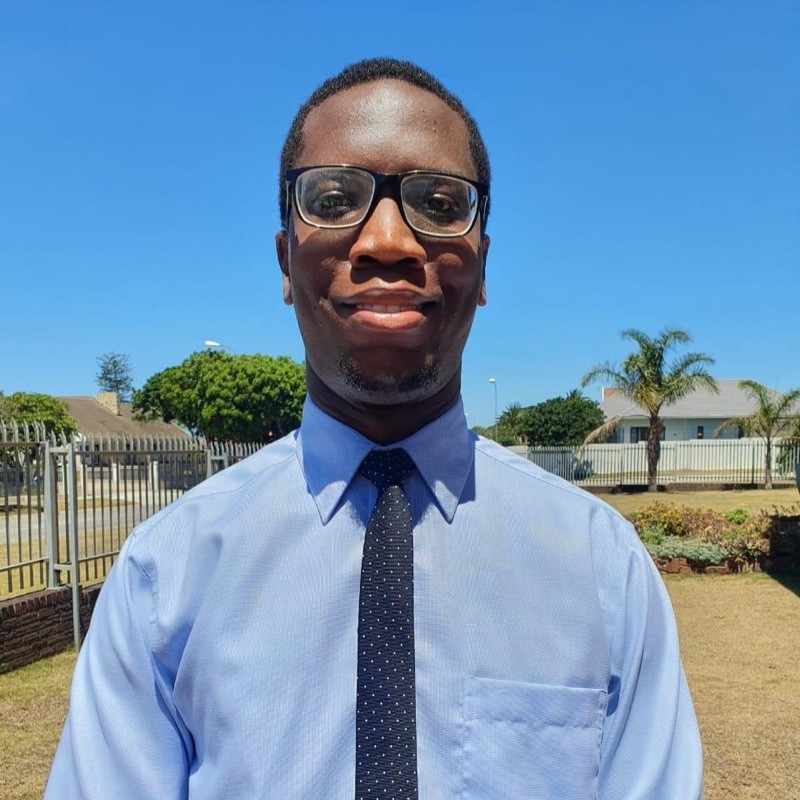
Keith Nare
Technical Head of Communications for GRT, Keith leads GRT's content strategy across various platforms, whilst coordinating internally to build the voice and opinions of the GRT team. Keith is a product of Nelson Mandela University and his PhD work focuses on Polymer and Physical Chemistry. He was a Research Associate at SANRAL in South Africa and later spent time as a Visiting Research Associate to NTEC at the University of Nottingham in the UK. He is a former Director of Communications for CALROBO in the USA.
Keith is passionate and enthusiastic about health and safety, sustainability, networking and finding synergy through conversations.
Related Interviews
MORE INDUSTRY ARTICLES
Nothing found.
